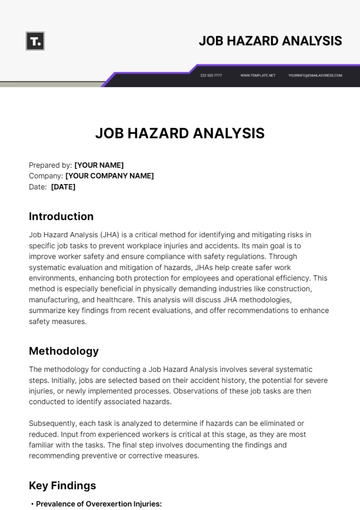Free Finance Credit Compliance Analysis

Executive Summary
This document provides a detailed analysis of [Your Company]'s credit compliance practices. The primary objective is to assess the company's adherence to established credit policies and regulatory requirements, ensuring sound financial health and risk management. Key findings indicate that [Your Company] maintains a robust credit management framework, with minor areas requiring improvement. The company's credit policy aligns with industry standards, offering flexibility to customers while safeguarding the company's financial interests. Regulatory compliance is strong, with effective internal controls mitigating potential risks. However, the analysis identifies a need for enhanced monitoring of high-risk customer segments and recommends periodic policy reviews to adapt to the evolving financial landscape.
Credit Policy Overview
Current Credit Policy
[Your Company]'s current credit policy is designed to balance risk management with market competitiveness. The policy outlines terms of credit, eligibility criteria for customers, and predetermined credit limits. Key aspects include:
Credit Terms: Standard payment terms are 30 days net, with provisions for extended terms for high-value clients.
Eligibility Criteria: Customers must undergo a rigorous credit evaluation process, including financial health assessments and credit history reviews.
Credit Limits: Limits are set based on the customer's creditworthiness, historical payment behavior, and the nature of their business engagement with [Your Company]
Credit Risk Categories
The policy categorizes customers into three risk categories: low, medium, and high risk. Each category is subject to different management strategies and credit terms.
Risk Category | Credit Terms | Management Strategy |
Low Risk | Up to 45 days | Regular monitoring |
Medium Risk | Up to 30 days | Enhanced monitoring |
High Risk | Up to 15 days | Strict monitoring and reassessment |
Policy Changes
In response to the dynamic financial market and regulatory environment, the following changes have been recently implemented:
Enhanced Due Diligence: Introduction of more stringent due diligence processes for new customers, especially in high-risk categories.
Dynamic Credit Limits: Adoption of a more dynamic approach to setting credit limits, allowing for adjustments based on ongoing credit evaluations.
Regular Policy Reviews: Establishment of semi-annual reviews of the credit policy to ensure it remains effective and compliant with new regulations.
Compliance Framework
Regulatory Compliance
[Your Company]’s compliance framework is robustly aligned with key financial regulations. The company ensures adherence to the Dodd-Frank Act, specifically in terms of risk management and consumer protection provisions. Compliance with Basel III standards is also a priority, focusing on maintaining adequate capital reserves and managing liquidity risks. Regular training sessions are held for staff to stay updated on regulatory changes.
Internal Compliance Controls
The company has established a series of internal controls to enforce compliance with its credit policy. These include:
Automated Compliance Checks: Automated systems are in place to flag transactions that deviate from established credit policies.
Regular Audits: Internal and external audits are conducted quarterly to assess compliance with credit policies and regulatory requirements.
Compliance Reporting: Monthly compliance reports are generated to provide management with an overview of compliance status and highlight any areas of concern.
Customer Credit Analysis
Customer Segmentation
[Your Company] classifies its customers into different segments based on credit risk, payment history, and credit utilization. This segmentation helps in tailoring credit policies and managing risks effectively.
Customer Segment | Risk Level | Average Payment Delay | Average Credit Utilization | Credit Limit |
Large Corporates | Low | 15 days | 40% | High |
SMEs | Medium | 30 days | 60% | Medium |
Start-ups | High | 45 days | 80% | Low |
Credit Scoring Model
The company uses a sophisticated credit scoring model to evaluate and monitor customer creditworthiness. The model incorporates factors such as financial stability, industry risk, payment history, and credit bureau scores. This allows for a dynamic and comprehensive assessment of each customer's credit risk.
Risk Management Approaches
For different customer segments, the company employs specific risk management approaches:
Customer Segment | Risk Management Approach |
Large Corporates | Personalized credit management, regular reviews |
SMEs | Standardized credit monitoring, occasional reviews |
Start-ups | Intensive monitoring, frequent credit reviews |
Risk Management Strategies
Credit Risk Mitigation
To mitigate credit risk, [Your Company] employs a multifaceted approach. Key strategies include:
Credit Insurance: Purchasing credit insurance for accounts receivable, providing a safety net against default.
Portfolio Diversification: Diversifying the customer portfolio to avoid concentration in any single industry or customer group.
Setting Credit Limits: Implementing dynamic credit limits based on real-time assessments of customers' financial health and market conditions.
Strategy | Description | Impact on Risk |
Credit Insurance | Insurance against customer default | Reduces financial loss |
Portfolio Diversification | Spread risk across various sectors | Lowers overall risk |
Dynamic Credit Limits | Adjust credit based on customer risk profile | Mitigates individual risks |
Monitoring and Reporting
[Your Company] has a rigorous monitoring and reporting system in place:
Continuous Monitoring: Ongoing monitoring of credit exposures and customer payment behaviors.
Compliance Reporting: Regular reporting to management on compliance status, highlighting any potential or emerging risks.
Monitoring Aspect | Description | Reporting Frequency |
Credit Exposure | Review of credit limits and utilization | Monthly |
Payment Behavior | Analysis of payment patterns and delays | Quarterly |
Audit Findings
Recent Audits
The most recent internal and external audits focused on credit compliance and risk management. Key findings were:
Internal Audit: Revealed a need for tighter controls in credit limit adjustments for high-risk customers.
External Audit: Highlighted exemplary compliance with regulatory standards, but suggested improvements in documenting credit decision processes.
Remediation Actions
Following the audit findings, [Your Company] has taken several remediation actions:
Enhanced Control Measures: Implementation of stricter approval processes for credit limit adjustments, especially for high-risk segments.
Process Documentation: Improvement in the documentation of credit decisions to ensure traceability and accountability.
Audit Finding | Remediation Action | Expected Outcome |
Credit Limit Controls | Stricter approval processes | Better risk management |
Documentation Gaps | Enhanced documentation of credit decisions | Improved compliance tracking |
Conclusion and Recommendations
Overall Assessment
In conclusion, [Your Company]’s approach to credit compliance is comprehensive and robust, aligning well with industry standards and regulatory requirements. The company has demonstrated a strong commitment to risk management and maintaining a healthy credit environment. The effective use of credit scoring models and segmentation strategies significantly enhances its ability to manage credit risk. However, there are areas where improvements can be implemented to further strengthen the credit compliance framework.
Key Strengths
Robust regulatory compliance and adherence to financial laws.
Effective customer segmentation and tailored credit management approaches.
Proactive risk management strategies, including credit insurance and portfolio diversification.
Areas for Improvement
Enhancing the documentation and traceability of credit decision processes.
Tightening controls over credit limit adjustments for high-risk customer segments.
Regularly updating credit policies to reflect changing market dynamics and regulatory landscapes.
Recommendations
Based on the analysis, the following recommendations are proposed to [Your Company]:
Recommendation | Purpose | Expected Benefit |
Improve Credit Decision Documentation | To ensure better traceability and accountability in credit decisions | Enhanced compliance and reduced risk of errors |
Regular Policy Review and Update | To align credit policies with evolving market and regulatory changes | Continued compliance and competitive advantage |
Strengthen Credit Limit Controls | To mitigate risks associated with high-risk customers | Reduced financial exposure and improved risk management |
Documenting Credit Decisions: Implementing a more structured process for documenting credit decisions will enhance transparency and accountability. This could involve standardized forms and approval processes, ensuring that all decisions are well-documented and easily auditable.
Regular Policy Reviews: Instituting semi-annual reviews of the credit policy will ensure that [Your Company] remains adaptive and responsive to market changes and regulatory updates. This will help in maintaining compliance and addressing any emerging risks promptly.
Strengthening High-Risk Management: Introducing more stringent controls and monitoring mechanisms for high-risk customers will help in better managing potential defaults and financial exposures. This might include lower credit limits, more frequent credit reviews, and stricter payment terms for these customers.
- 100% Customizable, free editor
- Access 1 Million+ Templates, photo’s & graphics
- Download or share as a template
- Click and replace photos, graphics, text, backgrounds
- Resize, crop, AI write & more
- Access advanced editor
Ensure regulatory adherence in credit operations with Template.net's Finance Credit Compliance Analysis Template. Editable and customizable, this template assists in evaluating compliance with credit-related laws and regulations. A key tool for compliance officers, it helps in identifying areas of improvement, ensuring credit operations are legally compliant and ethically sound.





























